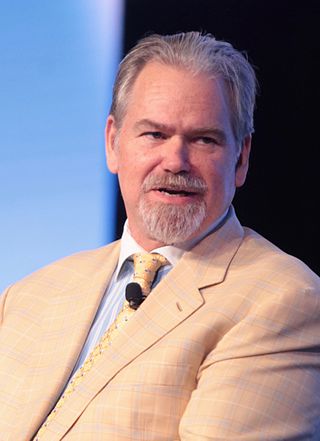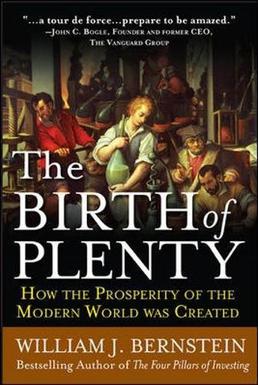Related Research Articles

Finance is the study and discipline of money, currency and capital assets. It is related to, but not synonymous with economics, which is the study of production, distribution, and consumption of money, assets, goods and services . Finance activities take place in financial systems at various scopes; thus, the field can be roughly divided into personal, corporate, and public finance.
Financial economics is the branch of economics characterized by a "concentration on monetary activities", in which "money of one type or another is likely to appear on both sides of a trade". Its concern is thus the interrelation of financial variables, such as share prices, interest rates and exchange rates, as opposed to those concerning the real economy. It has two main areas of focus: asset pricing and corporate finance; the first being the perspective of providers of capital, i.e. investors, and the second of users of capital. It thus provides the theoretical underpinning for much of finance.

Benjamin Graham was a British-born American economist, professor and investor. He is widely known as the "father of value investing", and wrote two of the founding texts in neoclassical investing: Security Analysis (1934) with David Dodd, and The Intelligent Investor (1949). His investment philosophy stressed investor psychology, minimal debt, buy-and-hold investing, fundamental analysis, concentrated diversification, buying within the margin of safety, activist investing, and contrarian mindsets.
In finance, a growth stock is a stock of a company that generates substantial and sustainable positive cash flow and whose revenues and earnings are expected to increase at a faster rate than the average company within the same industry. A growth company typically has some sort of competitive advantage that allows it to fend off competitors. Growth stocks usually pay smaller dividends, as the companies typically reinvest most retained earnings in capital-intensive projects.
In finance, interest rate immunization is a portfolio management strategy designed to take advantage of the offsetting effects of interest rate risk and reinvestment risk.
Peter Lewyn Bernstein was an American financial historian, economist and educator whose development and refinement of the efficient-market hypothesis made him one of the country's best known authorities in popularizing and presenting investment economics to the general public.
Financial risk management is the practice of protecting economic value in a firm by managing exposure to financial risk - principally operational risk, credit risk and market risk, with more specific variants as listed aside. As for risk management more generally, financial risk management requires identifying the sources of risk, measuring these, and crafting plans to address them. See Finance § Risk management for an overview.
Equity risk is "the financial risk involved in holding equity in a particular investment." Equity risk is a type of market risk that applies to investing in shares. The market price of stocks fluctuates all the time, depending on supply and demand. The risk of losing money due to a reduction in the market price of shares is known as equity risk.
Investment management is the professional asset management of various securities, including shareholdings, bonds, and other assets, such as real estate, to meet specified investment goals for the benefit of investors. Investors may be institutions, such as insurance companies, pension funds, corporations, charities, educational establishments, or private investors, either directly via investment contracts/mandates or via collective investment schemes like mutual funds, exchange-traded funds, or REITs.

Asset allocation is the implementation of an investment strategy that attempts to balance risk versus reward by adjusting the percentage of each asset in an investment portfolio according to the investor's risk tolerance, goals and investment time frame. The focus is on the characteristics of the overall portfolio. Such a strategy contrasts with an approach that focuses on individual assets.

David Frederick Swensen was an American investor, endowment fund manager, and philanthropist. He was the chief investment officer at Yale University from 1985 until his death in May 2021.
In finance and investing, rebalancing of investments is a strategy of bringing a portfolio that has deviated away from one's target asset allocation back into line. This can be implemented by transferring assets, that is, selling investments of an asset class that is overweight and using the money to buy investments in a class that is underweight, but it also applies to adding or removing money from a portfolio, that is, putting new money into an underweight class, or making withdrawals from an overweight class.

James Patrick O'Shaughnessy is an American investor and venture capitalist, currently serving as the CEO of O'Shaughnessy Ventures. He is the founder of O'Shaughnessy Asset Management, LLC (OSAM), an asset management firm that Franklin Templeton later acquired.
The following outline is provided as an overview of and topical guide to finance:

Robert D. Arnott is an American businessman, investor, and writer who focuses on articles about quantitative investing.
David Martin Darst, CFA, is an American financier, educator, author, and triathlete. For 17 years, he was a Managing Director and Chief Investment Strategist of Morgan Stanley Wealth Management, where he served as Vice Chairman of the Morgan Stanley Wealth Management Global Investment Committee. He was the founding President of the Morgan Stanley Investment Group, and the founding Chairman of the Morgan Stanley Asset Allocation Committee. Since 2014, he has served as an independent Senior Advisor to and a member of the Morgan Stanley Wealth Management Global Investment Committee.
Robert J. Sanborn is a fund manager, Portfolio manager and managing member of Sanborn Kilcollin Partners, LLC an investment management firm started in 2001. The firm is based in Chicago and manages an equity fund along with separately managed accounts. Mr. Sanborn manages the investments with portfolio manager Joshua Mangoubi. Mr. Sanborn was the portfolio manager of The Oakmark Fund, the flagship mutual fund of Harris Associates L.P., from Oakmark’s launch in August 1991 through March 2000. From 1983 to 1988 he was a security analyst and equity portfolio manager for the Ohio State Teachers Retirement System.

Stocks for the Long Run is a book on investing by Jeremy Siegel. Its first edition was released in 1994. Its fifth edition was released on January 7, 2014. According to Pablo Galarza of Money, "His 1994 book Stocks for the Long Run sealed the conventional wisdom that most of us should be in the stock market." James K. Glassman, a financial columnist for The Washington Post, called it one of the 10 best investment books of all time.
In finance, active return refers the returns produced by an investment portfolio due to active management decisions made by the portfolio manager that cannot be explained by the portfolio's exposure to returns or to risks in the portfolio's investment benchmark; active return is usually the objective of active management and subject of performance attribution. In contrast, passive returns refers to returns produced by an investment portfolio due to its exposure to returns of its benchmark. Passive returns can be obtained deliberately through passive tracking of the portfolio benchmark or obtained inadvertently through an investment process unrelated to tracking the index.

The Birth of Plenty: How the Prosperity of the Modern World Was Created is a nonfiction book on world history and economics by American author William J. Bernstein.
References
- ↑ Burns, Scott (3 December 2000). "The Couch Potato Portfolio, Plus". Dallas Morning News . Retrieved 25 September 2011.
- ↑ "The Coward's Portfolio -- A Modest Proposal".
- ↑ "Lazy Portfolio: Coward's Portfolio". Bogleheads.
- ↑ Adiga, Aravind (September 1, 2003). "The Man Who Knows Too Much". CNN Money . Retrieved July 7, 2022.